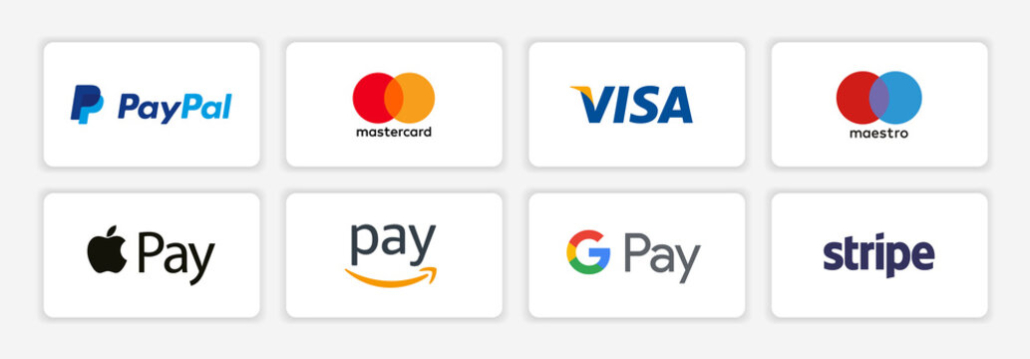The UK  Salary and Pay Scale Guide – 2024
Salary and Pay Scale Guide – 2024
UK nursing salary & pay scale guide 2024. Discover how much nurses get paid plus bandings, benefits and more.
The UK Nursing Pay and Pay Scale Guide – 2024
UK nursing pay and pay scale guide 2024. Find how much medical attendants get compensated in addition to bandings, advantages from there, the sky is the limit.
Agenda For Change NHS Nursing Pay Scale And Bands 2023 to 2024
Our Nurse’s Pay Calculator is based on Agenda for Change NHS Pay Scales and Bands in England for 2023 to 2024 (April to end of March). Our bandings and calculator have also been updated to reflect the pay rise confirmed in May 2023 – but do not include the one-off payment awarded within that deal.
Plan For Change NHS Nursing Pay Scale And Groups 2023 to 2024
Our Attendant’s Compensation Adding machine depends on Plan for Change NHS Pay Scales and Groups in Britain for 2023 to 2024 (April to end of Spring). Our bandings and mini-computer have additionally been refreshed to mirror the compensation rise affirmed in May 2023 – however do exclude the oddball installment granted inside that arrangement.
What Is Agenda For Change?
You may have heard of the so-called ‘Agenda for Change’ (AfC). Essentially, AfC was a new system introduced in 2004 that underpinned the banding structure that applies to nursing pay today. It was implemented to correct historic problems with nursing pay – namely, to provide a more structured way of ensuring NHS staff get equal pay for work of equal value.
This idea of allocating roles to specific pay bandings was a new one, and broadly speaking, the system has remained largely unaltered since 2004.
Between April 2018 and March 2021 the new pay structure ‘New Pay Deal’ in NHS England was rolled out. This has since been followed by one-off, annual pay increases between 3% and 5% following negotiations between the government and health unions.
What Is Plan For Change?
You might have known about the purported ‘Plan for Change’ (AfC). Basically, AfC was another framework presented in 2004 that supported the banding structure that applies to nursing pay today. It was carried out to address memorable issues with nursing pay – to be specific, to give a more organized approach to guaranteeing NHS staff get equivalent compensation for work of equivalent worth.
This thought of designating jobs to explicit compensation bandings was another one, and as a general rule, framework has remained to a great extent unaltered beginning around 2004.
Between April 2018 and Walk 2021 the new compensation structure ‘New Compensation Arrangement’ in NHS Britain was carried out. This has since been trailed by one-off, yearly boosts in salary somewhere in the range of 3% and 5% following exchanges between the public authority and wellbeing associations.
About Nursing Pay In The UK
To say nursing pay is a hotly debated issue is something of a misleading statement. And keeping in mind that it’s broadly perceived that nursing is a compensating profession, do the monetary prizes match the requests of the gig?
Somewhere in the range of 2010 and 2015, normal NHS nursing pay rates expanded by more than 2%.
Then somewhere in the range of 2015 and 2017, a proper 1% compensation rise was carried out – the notable ‘pay cap’. From 2018 to end of Walk 2021 The New Compensation Arrangement was carried out where pay rates in all cases expanded north of a long term period. In July 2021, a 3% compensation rise was reported for NHS medical caretakers, trailed by a comparable expansion in 2022. Most as of late, in May 2024, a 5% increment was reported, notwithstanding an oddball installment. This installment went from around £1900 for a Band 5 medical caretaker, to more than £3000 for Band 8 or 9 trained professionals.
Be that as it may, these titles don’t recount the full story of nursing pay. Does the confidential area, for instance, offer higher wages, as is frequently expected? Do bank and office medical attendants, frequently working one next to the other with extremely durable staff, appreciate unfathomably predominant compensation parcels? Furthermore, exactly the way that great is the NHS annuity and other compensation enhancing benefits?
Scarcely any positions convey such an expansive scope of compensation ‘banding’, and hardly any present such multifaceted contrasts as far as private and public area pay and advantages.
Nursing offers extraordinary vocation adaptability, and that applies to pay as well – bank and organization nurture frequently have the opportunity to build their profit as and as the need should arise. For nursing understudies and trying attendants, understanding these elements is indispensable while thinking about your future.
Our extensive manual for nursing pay rates, bandings and pay handles this complex and frequently disputable subject with basic realities and insider tips, offering direct direction on every one of the key elements influencing what medical caretakers acquire.
ollowing talks between the public authority and wellbeing associations.
What Is The Typical Pay For A UK Medical caretaker?
An inquiry we’re frequently posed is: what is the typical compensation of a UK Medical caretaker?
It’s something everybody from hopeful medical attendants to qualified medical caretakers in different nations are anxious to comprehend.
Finding an ‘normal’ is interesting, for various reasons.
UK medical attendants can work in the NHS or the confidential area and pay can change significantly between the areas. What’s more, inside the NHS, pay changes as per experience and expert turn of events.
Different work sheets and enrollment locales that track the pay rates of occupations they post recommend the typical pay of a UK nurture is somewhere near the £35,000 to £38,000 a year point.
Strangely, over half of Grown-up attendants are between the age of 41 and 60. And keeping in mind that certain individuals really do become attendants in their 40s and then some, we likewise realize that by far most of recently qualified medical caretakers are younger than 30.
That proposes the typical medical caretaker has no less than 5 years’ insight, which compares with the £35,000 to £38,000 territory.
It doesn’t be guaranteed to reflect private area pay yet considering that by far most of medical caretakers work in the NHS, this figure appears to be the most dependable accessible.
An Investigation Of Private And Public Area Nursing Pay
While NHS pay for medical caretakers is obviously organized, confidential area pay can differ fiercely.
First off, numerous confidential area medical attendants who could work for private medical care associations, schools or noble cause commonly arrange their compensations. Similar to the case in most different businesses, occupations can be publicized without plainly characterized compensations or will be caveated with ‘pay subject to encounter’.
Accordingly, the confidential versus NHS pay banter is an inconceivable one to address. Set forth plainly, some confidential area attendants will procure more than in the NHS, and some less.
It’s best rather to consider different elements encompassing this discussion – and what sort of individual you are. The NHS offers dependability and unwavering quality. The compensation bandings and advantages are clear and steadfast. You know where you are with a NHS work.
In any case, a confidential nursing position will work distinctively through and through. While you could hit a banding roof at the NHS, similar imperatives will not be guaranteed to apply secretly. Very much like the remainder of the UK’s confidential area laborers, assuming you believe you’re worth more, you can stroll into your manager’s office and inquire. However, nothing is ensured – so there are no gradual or government rises.
Nonetheless, to comprehend the advantages of being a NHS nurture, you truly need to consider the advantages bundle as well…
It doesn’t be guaranteed to reflect private area pay however considering that by far most of medical attendants work in the NHS, this figure appears to be the most solid that anyone could hope to find.
What Are The More extensive Advantages Of Being A NHS Medical caretaker?
One of the most outstanding parts of being a NHS nurture is the inarguably incredible advantages – which truly do definitively affect your generally monetary conditions.
Here are probably awesome:
Improved pay for unsociable hours – somewhere in the range of 30% and 60% above standard rate for night moves, ends of the week and bank occasions
The NHS Benefits Plan stays one of the most liberal and exhaustive in the UK (it’s significant that worker commitments are commonly higher than in the confidential area, in any case)
27 days’ vacation each year, in addition to bank occasions
Free admittance to word related wellbeing and guiding help
A half year full compensation and a half year half compensation for debilitated leave
Liberal maternity and paternity leave (well over the legal least)
Tremendous and shifted admittance to instructional classes and expert turn of events – frequently with full help and subsidizing from the trust you work with
For some attendants, really the advantages seal the deal when deciding to work for the NHS.
What Are The Advantages and disadvantages Of Bank And Organization Nursing Concerning Pay?
Another normal confusion encompasses office work.
Super durable medical attendants frequently work close by organization attendants on specific movements, and immediately get on that their hourly rate far surpasses their own. From this, an end is immediately leaped to: I’d procure more as an organization nurture. Also, this isn’t really the situation.
While an office rate is normally higher, organization attendants become no ill compensation or yearly leave. Moreover, there is no assurance of work, and to work reliably you may be compelled to work in areas or disciplines you’d don’t really want to. Also, ‘organization covers’ are being applied to trusts the nation over – which is undermining how much office nurture each trust can really utilize.
So pay in this example truly is about more than cash. For the ideal individual however, being an organization nurture truly can pay off. The best office medical attendants cast their nets broadly. They could enlist for bank work at two adjoining trusts, and afterward with a nursing office as well. Thus, they must be available to a wide assortment of chances, working in emergency clinics, clinical focuses, detainment facilities or schools over time. Be that as it may, in the event that you’re a medical caretaker hoping to construct insight and evaluate different disciplines, this can all help you out – all while supporting your compensation bundle.
The reality is to comprehend the sort of individual you are, and the sort of medical caretaker you need to be. The two different ways of working can be monetarily fulfilling assuming you approach them in the correct manner. Furthermore, you can obviously switch at whatever point fundamental – as a certified medical caretaker, long-lasting, NHS, private, office and bank work is all available to you.
What Level Of Liability And Obligations Might You at any point Expect Inside Each Nursing Band?

Band 5 – Recently Qualified Medical attendant
As a recently qualified nurture, you’ll begin at the lower part of Band 5. Ordinarily, you’ll begin in a medical clinic setting and afterward progress inside your ward – acquiring experience as you climb inside your banding.
Many wards have a genuinely make vocation movement way set up all along, which assists you with preparing. Preparing open doors will be imperative not exclusively to climbing inside your banding, yet to giving yourself the fundamental abilities to go after Band 6 jobs.
Band 6 – Senior Attendant, Wellbeing Guest and Expert Medical caretakers
Band 6 jobs will frequently include comparable assignments and obligations to Band 5 – yet the fundamental distinction is that they will be more particular. A genuine illustration of a Band 6 work would be a wellbeing guest, which would require a few further capabilities. Similarly, you should have practical experience in concentrated care or long haul care, with these jobs frequently accompanying a Band 6 compensation.
Ultimately, to advance to Band 6, you should seek after some further preparation inside an expert region – yet the trust you’re working for will frequently give subsidizing or backing to this.
Band 7 – Ward Chief, High level Medical caretaker Expert
Band 7 jobs regularly require an Expert’s level degree or same – however once more, trusts are much of the time extremely quick to help their nursing staff in achieving these capabilities. Furthermore, significantly, errands and obligations truly move forward an indent. Normal models incorporate High level Attendant Professionals (ANPs), whose cutting-edge preparing permits them to direct definite evaluations, make analyze and recommend medication. As a matter of fact, at this level, a medical caretaker’s job starts to incorporate liabilities you could typically connect with a specialist.
You can likewise advance to this level inside a more point by point specialism. A working division professional, for instance, could set up a patient for medical procedure and help the careful group. These high level abilities require a ton of additional review and many years’ insight, however it’s a profession course that frequently starts with a standard Band 5 nursing post.
Besides, as a general point, some more administrative nursing jobs (like a Ward Supervisor) may very much squeeze into Band 7.
Band 8 – Present day Lady or Boss Medical attendant
For medical caretakers, this banding reflects heads of nursing groups. You will in any case do many nursing obligations, yet you’ll likewise take care of an enormous group of staff. At this level, demonstrated administration abilities are fundamental, so it’s about experience and not simply capabilities. Compensations can bounce gigantically in this banding, however that is a direct result of the additional obligation and the definitely extended periods
Band 9 – Expert
Band 9 is solely for advisor level attendants. Here, you should be a specialist in your field – demonstrated through experience and study. Like experts or counselors in some other industry, you’ll be entrusted with assisting with molding undeniable level navigation. Arriving at this level will require a profession long quest for expert abilities and capabilities to enhance your professional experience.
A last note on bandings and jobs
While a recently qualified medical caretaker will constantly be put into a Band 5 job, from band 6 onwards the topic of what jobs fit which bandings turns out to be more intricate.
A genuine model may be a High level Medical caretaker Practitoner.
Generally speaking this is classed as a Band 7 job. Notwithstanding, where it’s somewhat more specific, it is every so often presented as a Band 8a job (for instance, something like a High level Neonatal Medical caretaker Expert).
So any groupings of bandings and jobs must be viewed as an aide as it were. Any place you are in your profession, the jobs you try towards and which banding they are on could shift relying upon the specialization, and, surprisingly, the NHS Trust itself.
You can likewise advance to this level inside a more point by point specialism. A working division professional, for instance, could set up a patient for medical procedure and help the careful group. These high level abilities require a ton of additional review and many years’ insight, however it’s a profession course that frequently starts with a standard Band 5 nursing post.




 Salary and Pay Scale Guide – 2024
Salary and Pay Scale Guide – 2024
